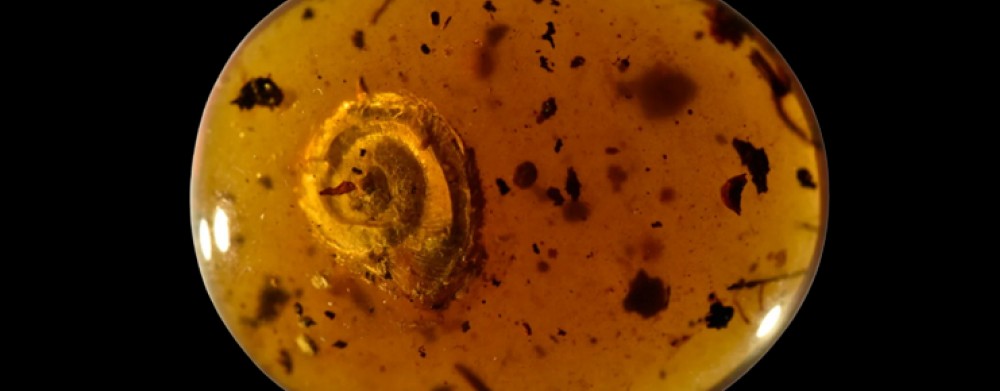Hairy snail sunk in amber

In a piece of amber from 99 million years ago, a perfectly preserved snail with delicate hair covering the shell was discovered.
Amber with a snail preserved inside was found in 2017 in the Hukawng Valley in Myanmar (formerly Burma). The mollusk covered in fine hairs was named Archaeocyclotus brevivillosus , from the Latin word "brevis" - meaning "small", and the word "villōsus" - meaning "hairy".
Hairy snail - The specimen is approximately 99 million years old. What attracts the most attention is its tiny hairs covering the shell. Each of them has a length of 150 to 200 micrometers. The snail itself is 26.5 millimeters long, 21 millimeters wide and 9 millimeters high.
As noted by the researchers, this is not the first hairy snail known to science. - This is the sixth species found so far from the "hairy" family Cyclophoridae - a group of tropical land snails. It was embedded in Mesozoic amber and is about 99 million years old, explained University of Bern paleontologist Adrienne Jochum.
But hairy snails are not extinct creatures. Several similar species that are still alive today also have fine hairs on their shells. Of the eight snail species found in amber from Myanmar, six have hairs on their shells, suggesting that this is where the ancient hairy snails had their roots.
Evolutionary advantage
A team of scientists led by malacologist Jean-Michel Bichain of the Museum of Natural History and Ethnography in France, who studied the ancient specimen using classical microscopy and 3D X-ray tomography, found that the tiny hairs are located on the outermost part of the snail's shell, called the periostracum. The appearance of hairs on the shell must have cost these little creatures a lot of energy, so the researchers believe it must have given the snails some selective advantage in their tropical habitat to make it profitable.
Scientists believe that fine hairs may have helped the snails transition from the aquatic environment to life on land during the Mesozoic period, 252 to 66 million years ago. Scientists speculate that the trichomes may have retained water and prevented the shells from drying out, allowing these animals to colonize arid areas. It is also possible that the trichomes may have helped with thermoregulation or served as a kind of Velcro to attach to leaves or stems.
- The bristles may have served as camouflage or to protect the snail from direct attack by birds or other predators. It may also have played a role in the cochlea's thermal regulation, allowing tiny water droplets to adhere to the shell, thus serving as "nutrient". Finally, it cannot be ruled out that hair provided an advantage in sexual selection, Jochum explained.
It's hard to find traces of ancient species native to the tropics, given the warm, humid conditions that are ideal for organic matter to break down. Therefore, the creatures preserved in amber fill some of the gaps in the fossils found, providing details about the soft tissues and even colors of ancient insects that would otherwise be lost over time.
Source and full article: https://dzienniknaukowy.pl/planeta/wlochaty-slimak-zatopiony-w-bursztynie
